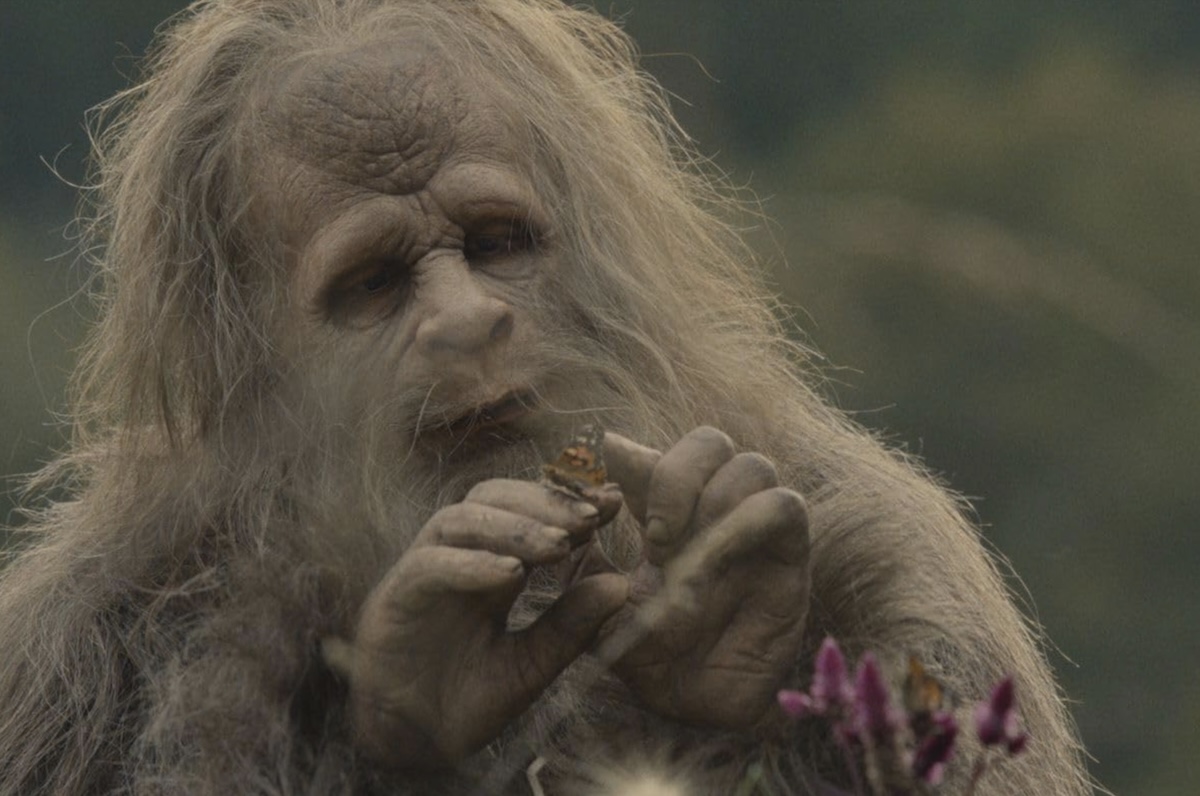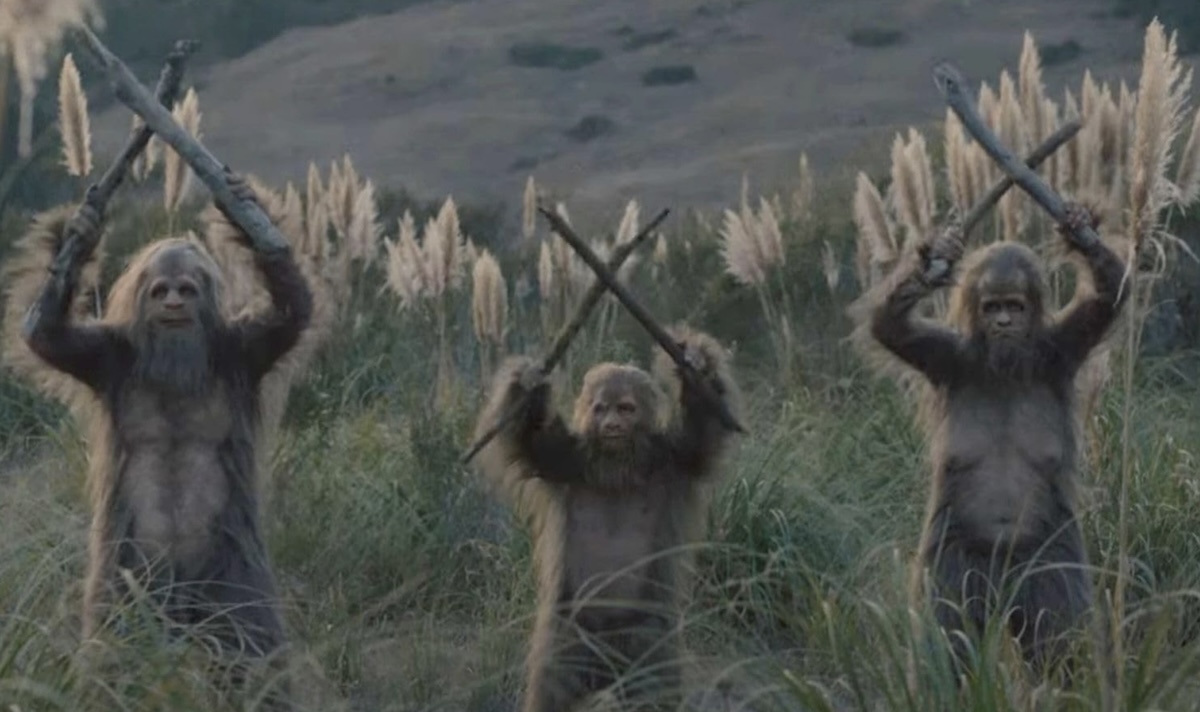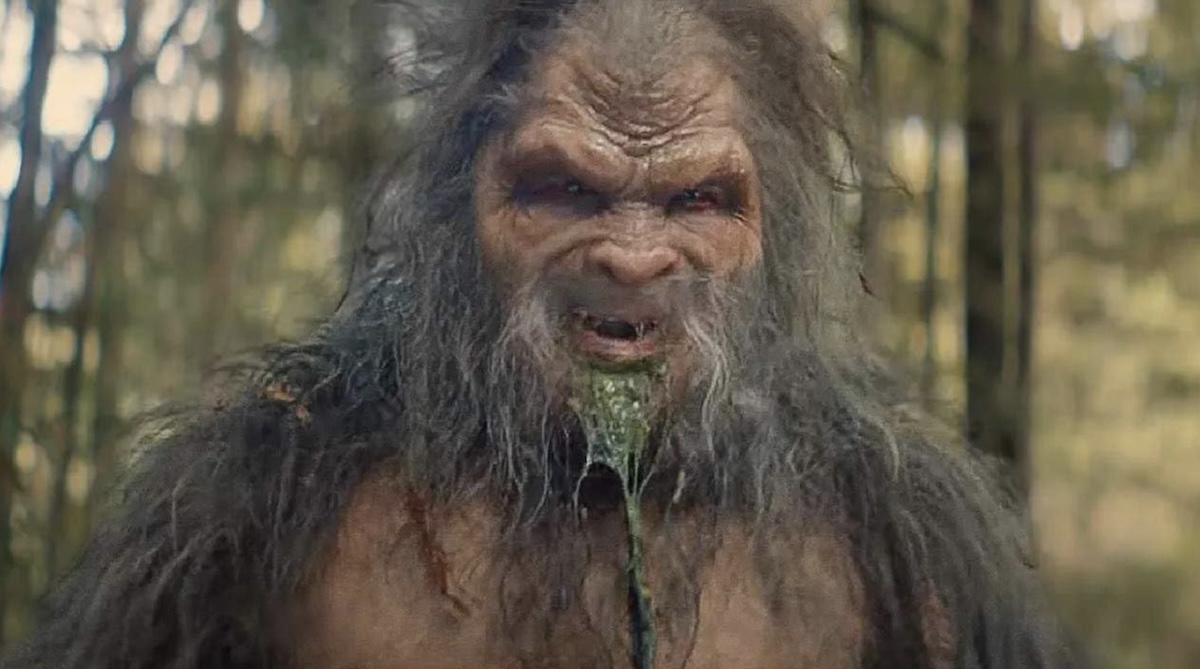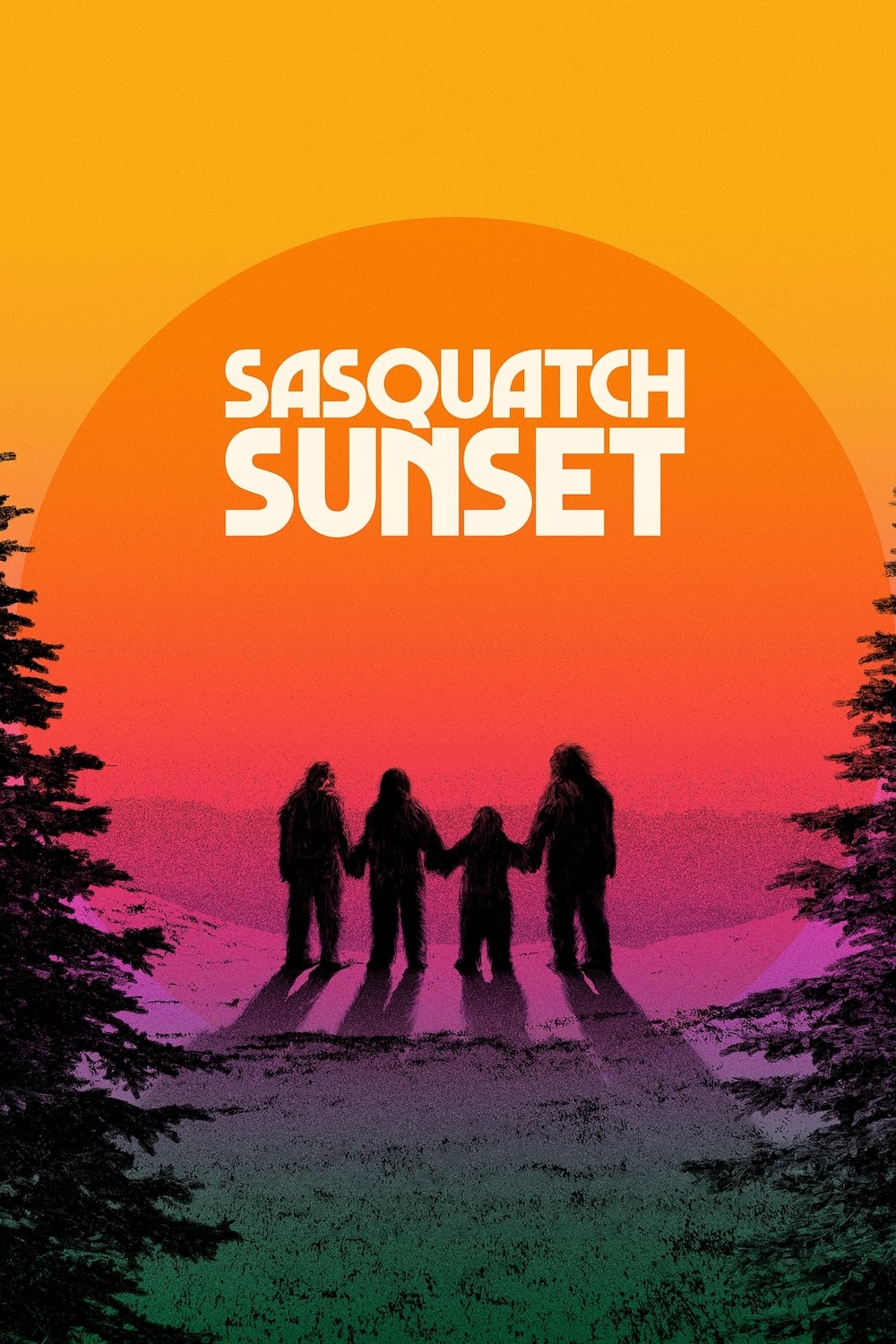SASQUATCH SUNSET (2024)
A year in the life of a family of bigfoots.

A year in the life of a family of bigfoots.


When Sasquatch Sunset had its world premiere at the Sundance Film Festival in January 2024, it received many walkouts. Now that it’s reached cinemas worldwide, general audiences get to experience this wacky experiment that attempts quirky comedy and environmental messaging. How successful it is at either is sure to divide audiences.
Directed by Nathan Zellner and David Zellner (Kumiko, the Treasure Hunter), with a screenplay by David Zellner, Sasquatch Sunset follows a family of nomadic sasquatches—-an alpha male (Nathan Zellner), a female (Riley Keough), her child (Christophe Zajac-Denek), and another male (Jesse Eisenberg)—over a year. Their journey explores an unknown and changing environment as they search for others of their kind.
The film opens in springtime. We see Sasquatch performing a ritualistic drumming sequence amidst the Californian Redwoods, hoping to elicit a response from others of their kind. Alas, their efforts are in vain. Leaving their shelter, they struggle to find food. An awkward pause ensues as the alpha male mates with the female, while the other two watch on. All this unfolds in silence, with grunts and guttural sounds serving as their only means of communication. Indeed, the entire film remains dialogue-free.

Without speech, the film relies heavily on the music soundtrack to carry the narrative forward. The score from The Octopus Project is one of the film’s standouts. Because its use is minimal, the moments when it’s used are all the more memorable, carrying tension and emotional resonance where dialogue cannot.
The film’s greatest achievement is undoubtedly the make-up. I can’t imagine how long the actors had to sit in the make-up chair or how long the filming days were in those hot suits, but it was all worth it. The make-up, heavily inspired by the look of Planet of the Apes (1968), looks fantastic. While performance-capture can create amazing animalistic characters, as seen in the newer Planet of the Apes films, it’s refreshing to see practical effects used so effectively. We’re transported into the film and, after a few minutes of trying to work out which character is Jesse Eisenberg, it doesn’t matter anymore. The four actors embody these fictional characters so well. Without being able to research real Sasquatches or have experts coach them on their behaviour, they have to create their performances, using their eyes and bodies to create a visual language that allows us to easily understand the human emotions at play.
Emmanuel Lubezki, the Academy Award-winning cinematographer of Tree of Life (2011), spoke on that film to Collider, saying “Photography is not used to illustrate dialogue or a performance. We’re using it to capture emotion.” Sasquatch Sunset feels tethered to this experimental idea of what film can achieve; creating emotion through image. However, where Tree of Life used collections of shots without a normal narrative to conjure emotional and thematic resonance, Sasquatch Sunset is tied to conventional means of storytelling, which hinders its ability to land strongly either as a comedy or environmental meditation.

For some cinema-goers who find humour in bodily fluid expulsion, Sasquatch Sunset delivers it in litres, from every orifice imaginable. With such a unique cast of characters, the film has ample opportunity to create some hearty laughs. To its credit, I did find myself chuckling at moments, like when the family encounters a paved road for the first time or when they attempt to use a turtle like a mobile phone. However, the filmmakers rely on the most banal level of humour, which restricts its lasting appeal.
Because the film tries to establish our connection with the furry family through the most basic human experiences—lust, loneliness, and connection—Sasquatch Sunset focuses on the most fundamental storytelling beats and jokes to ensure it reaches a wider audience. However, it’s when the film takes greater risks in its comparisons to humanity, exploring hangovers, imaginary friends, and grappling with maths, that it becomes more interesting than a child’s idea of humour.
For the film’s thematic concerns, Sasquatch Sunset has a significant challenge in conveying poignancy without dialogue. Throughout the film, the Sasquatch family comes to terms with a changing world. They struggle with a dangerous natural environment they’re unfamiliar with, or perhaps their leadership is too intoxicated or simple to understand (could this be why they are the last remnants of a mysterious species?). As they travel deeper into the world’s dangers, they encounter an even greater threat: humanity.

Where the first half of the movie sees the family battling mountain lions and poisonous plants, the second half features them grappling with deforestation and 1990s electronics. In one of the film’s most memorable scenes, the family stumbles upon an abandoned human campsite. While rummaging around, the child accidentally plays a cassette tape on a portable stereo. The Sasquatches freeze in awe as the film’s only spoken words come from the hypnotic dance music of “Love to Hate You” by Erasure.
Sasquatch Sunset succeeds in drawing comparisons between endangered species and how human interference in the natural world is the downfall of all. However, this message only comes across clearly in the second half of the film. While the film is divided into four chapters to follow the changing seasons, it becomes a disjointed experiment that feels more like a comedic tribute to the myth that has intrigued audiences for decades rather than, as the film hints at but never fully embraces, a strong condemnation of humanity.
Despite this, it’s an impressive feat to craft an entire, recognisable narrative around four mythological creatures. Dialogue-free narratives appear to flourish in animation, such as Wall-E (2008) and The Red Turtle (2016), so live-action equivalents seem even more remarkable. Films like All is Lost (2013), A Quiet Place (2018), and most notably the works of Jean-Jacques Annaud, demonstrate the power of filmmaking when we focus on imagery rather than conversation. As Dune (2021) director Denis Villeneuve said: “Frankly, I hate dialogue. I don’t remember movies because of a good line, I remember movies because of a strong image. I’m not interested in dialogue at all. Pure image and sound, that is the power of cinema.”
Sasquatch Sunset certainly admires the visual power of the medium. The technical aspects competently shine through. It’s a shame that the puerile humour and disjointed narrative themes detract from what could have been a truly memorable film.
USA | 2024 | 88 MINUTES | COLOUR | ENGLISH


directors: Nathan Zellner & David Zellner.
writer: David Zellner.
starring: Riley Keough, Jesse Eisenberg, Christopher Zajac-Denek & Nathan Zellner.
